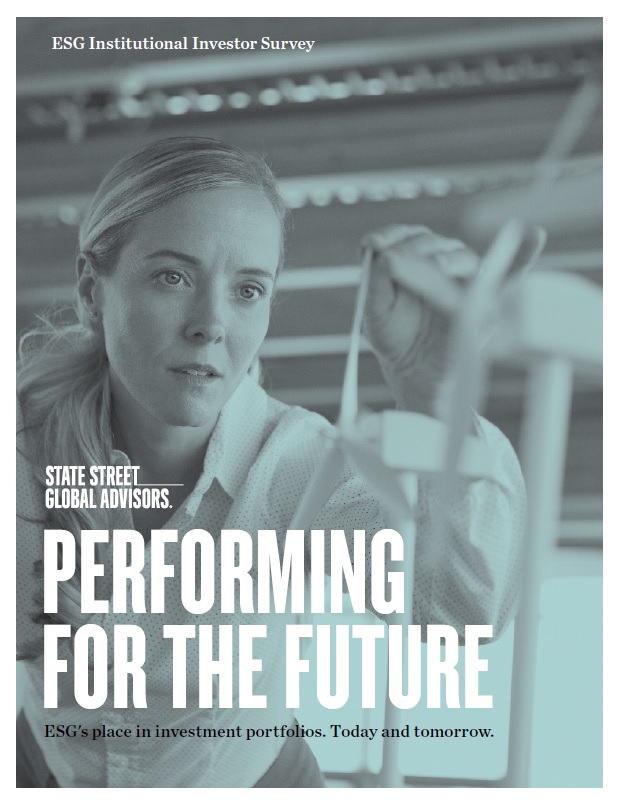Performing for the future
Growing interest in environmental, social and governance (ESG) credentials among institutional investors reflects a view that ESG insights and perspectives can address multiple objectives.
In addition to targeting positive social or environmental impacts, ESG criteria are increasingly recognized as material to long-term financial outcomes.
In 2016, ESG investing encompassed $22.9 trillion, or just over a quarter, of the world's professionally managed assets.
INTRODUCTION
To gain deeper insights into how investors are implementing ESG in their portfolios and the challenges they face, State Street Global Advisors commissioned a survey of 475 global institutional investors in the United States, Europe and Asia Pacific, including some of the largest pension plans, endowments and foundations. Respondents are directly involved in or influence asset allocation decisions. The findings were supplemented by a series of in-depth interviews with senior institutional investment professionals.
The results confirm that overall adoption of ESG investing is high: the vast majority of investors have some exposure to ESG factors in their portfolios. Furthermore, institutions are highly satisfied with the performance of their ESG investments. Indeed, the extent of satisfaction among those investing in ESG is encouragingly strong.*
Yet, while the survey finds that ESG investments are a feature of many institutional portfolios, the depth of exposure is low for all but a small group of investors, despite long-term performance potential. ESG encompasses only a third of investments on average. We uncovered a range of challenges that can inhibit investors’ capacity to embrace ESG investing more fully.
Issues around metrics and a lack of standardized performance measures can lead to confusing and contradictory results and prove particularly concerning.
Other difficulties include the lack of internal capabilities, internal and external stakeholder misalignment with ESG objectives and concerns over costs.
Confronting these challenges demands a multifaceted approach. Given the range of investor experiences and perspectives, there is no such thing as a typical ESG investor: they represent a broad spectrum of knowledge, expectations and goals.
Indeed, our survey identifies three groups of institutional investors along a continuum of ESG adoption:
• Low adopters (ESG strategies represent less than 25% of their portfolio)
• Intermediate adopters (25-50%)
• High adopters (over 50%)
Within each group we see variations in conviction around ESG performance, the prominence they attribute to the various challenges that can limit ESG uptake and their level of momentum toward ESG integration.
Addressing these issues will be critical to enabling more investors to capitalize on the long-term performance characteristics that ESG can offer.
To download the full report, please click here.

